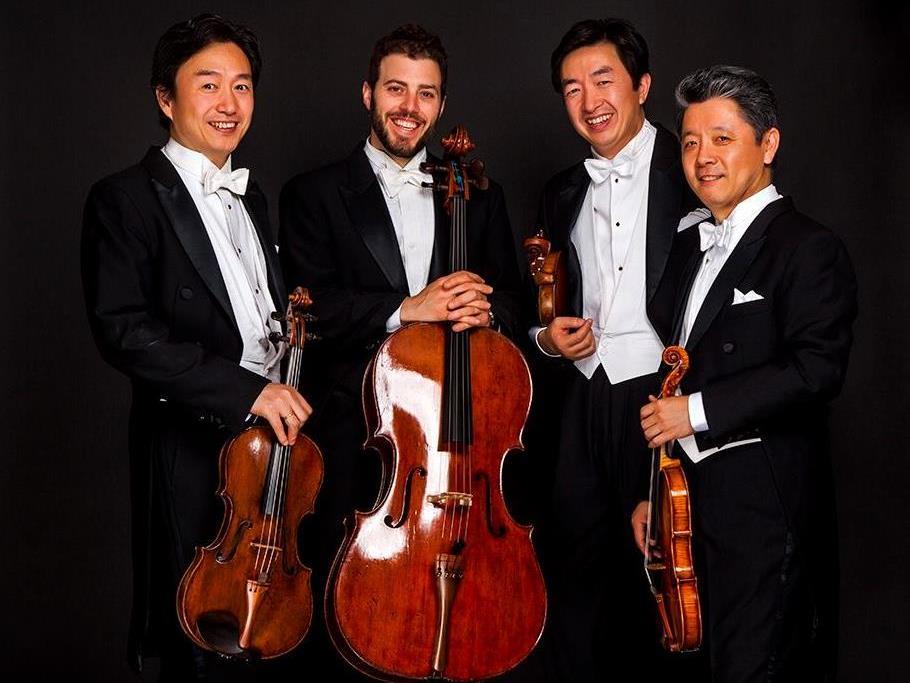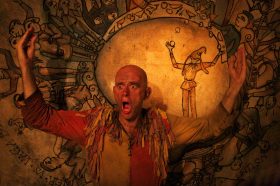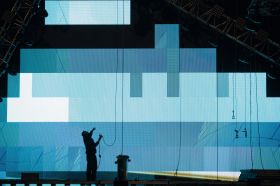In the second of its three concerts for the Melbourne Festival’s Haydn for Everyone series, the Shanghai Quartet first appeared as a quintet. This was thanks to a collaboration with pianist Bernadette Harvey for the first item, Carl Vine’s Fantasia. It was a good choice for a program that was infused with poetic ideas, and was a welcome inclusion in a series that was short on Australian compositions, none chosen by local ensembles.
As Harvey explained in her introduction, Vine’s work was a single-movement piece that nevertheless fell into three distinct sections. The piano’s opening soft chords were in dialogue with pizzicato strings that continues as the piano articulated the first melody. As the strings took a stronger role, the piano’s exploratory sound gave place to a rippling sound from all players punctuated by chords. Harvey was well in control of the complex rhythms that followed a staccato section and well before the end of the first section was unquestionably an integral part of the ensemble.
Resonance was the key to the ensuing slow section, with a dreamlike passage leading into a brief moment of atonality. Again, the piano was in dialogue with very very soft strings until the final “movement” abruptly changed the mood and pace. All players showed their virtuosic skills, but it was Harvey who appeared to lead (by the sheer weight of the piano’s sound. There was plenty of excitement as Vine’s work ended like a ride on a roller-coaster.
The great Joseph Haydn was the inspiration for this series, and the Shanghai Quartet chose to play his String Quartet No.53 in D major, Op.64, No.5 “The Lark”. It began with a measured tune at a quite sprightly allegretto pace, with the theme’s development starting almost straight away.
The Shanghai Quartet showed itself to have a lovely balance, with the first violin heard to advantage and all parts graceful to the end of the movement. When they began the next, there was much more eye contact than before. The Adagio as movement begins with four-part harmony, and is both sweet and plangent. Polyphonic development was brief – and again, there was a lovely solo part for first violin as the basic theme is embellished with each reprise.
Thoughtful phrasing added to that ‘MozartIan’ sound – although, having said that, I acknowledge that many feel that Haydn has for too long been in Mozart’s shadow. Co-curator of the classical music component of this year’s Festival, the ACO’s Richard Tognetti, has gone on the record as saying that Haydn is the “go-to composer” for many musicians and that he intends featuring Haydn in future Festivals. Those who heard this performance by the Shanghai Quartet will be pleased with that news.
The third movement’s folk-style dance was perhaps much brighter than what is usually expected from Haydn. I wondered if this might be the lark, but research suggests that comes from the high melodic lines of the first violin in the first movement’s opening phrase.
There was quite a bit of movement in the cello as well as other parts. In the very fast final movement all instruments were well matched, as if the coda-like piece was intended to show off each player’s prowess. Certainly the work ended with a flourish.
The final work was by Chinese composer Zhou and was quite challenging to this listener’s ears (despite three years as a classical music broadcaster in Hong Kong!). This is because Zhou, unlike Tan Dun for instance, makes no obvious concessions to Western ears – and why should he? One of the Quartet introduced this piece at length and, as there were ‘characters’ in it (poets, fishermen, monks) this assisted following the shape of the music.
The best I feel qualified to do is to mention a few aspects of the performance, which was clearly well executed by the performers, who were musically on home territory.
The first movement featured a very high violin with a quite unearthly sound, similar to the Chinese erhu. There were a number of downward runs, with all players managing to stay in sync. The audible rain beating on the windows strangely seemed an appropriate accompaniment.
The second movement had a more familiar melodic line, with plucking of instruments continuing. Unfortunately this technique played havoc with the viola, with the violist having to replace his instrument thanks to a broken string. The third movement was also often pizzicato, with more melody and at times a shimmering sound. And, unfortunately, another broken string for the violist, who had no option but to soldier on. It did not spoil the music but it did introduce a certain nervousness in the audience – and probably the quartet.
After a long but accessible third movement, the fourth was quite challenging in its abstraction and atonal sound, It was, however, very intense, and the playing virtuosic – with amazing effects. Perhaps the ‘poets’ were dancing the tarantella! Certainly we were able to hear the exact moment we’d been told about: when each of the eight poets fell over in a drunken stupor. This was signified by the music climbing up the scale, followed by an emphatic thump.
This was an evocative and entertaining work that deserved closer study. Certainly it was it in the hands of masters, who are to be thanked for bringing the Festival such a richly varied program.
Rating: 4 stars out of 5
Shanghai Quartet
Collins St Baptist Church
22 October





